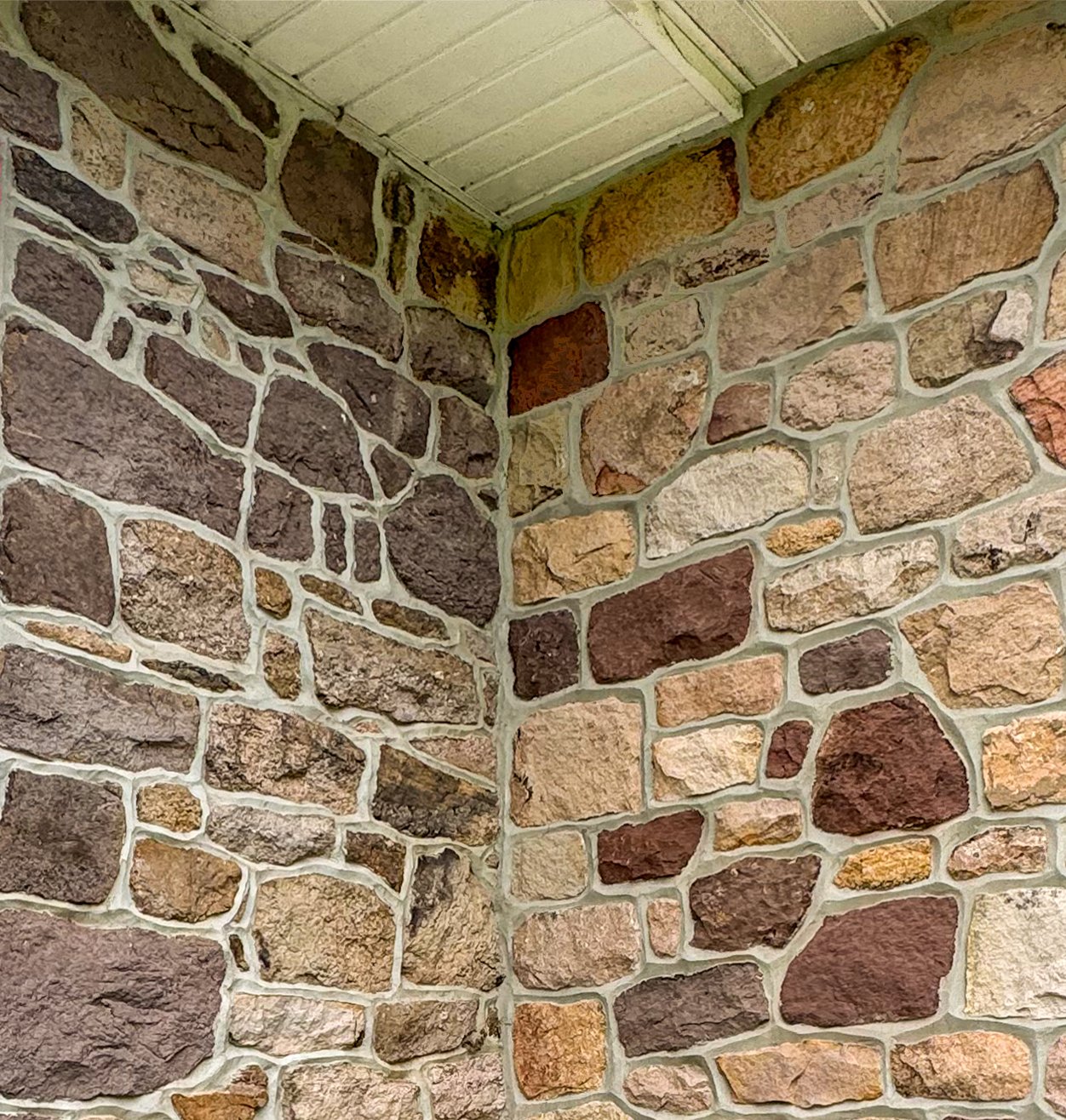Lichty’s Mennonite Church
East Earl, Lancaster County, PA
Built in 1889, with later additions.
Above: The 1889 stone building is on the right, with a later addition on the left. Before the congregation built this meetinghouse they met in the nearby farmhouse of the Lichty family, for whom this church is named.
1952 Newspaper Quote:
“One of the most picturesque church sites
in the eastern end of the county.”
1952 newspaper quote: “The property [Lichty’s Church], located on the Terre Hill Road, is one of the most picturesque church sites in the eastern end of the county.” Lancaster New Era, May 30, 1952, page 14.
The Building Stone:
Triassic Sandstone
of the Hammer Creek Formation
Above: Lancaster County’s sandstone of the Hammer Creek Formation was formed during the Triassic period, ca. 252 to 201 million years ago. Above map detail: Geologic Map of Pennsylvania, by Berg, Edmonds, Geyer, etc., 1980. (Church icon added)
Minimalist Mennonite Meetinghouse:
Above: This 1889 church “was built of sandstone from the community, hauled there by our forefathers with horse and wagon.” Quote: History of Lichty’s Church and Cemetery, Sauder, 1965.
Above: Sandstone and pebbly conglomerate of the Hammer Creek Formation.
Above: The sandstone corner quoins are of various colors. Repointing is beautifully done with beveled-ridge mortar joints.
The stone was covered with cement wash in 1952.
It was later removed.
Above: Lichty’s Church before the modern addition. The cement wash that covered the stone was applied in 1952. Cement wash is made of cement and water. It is more durable than whitewash which is slaked lime and water. These washes were frequently used to cover stone walls. Image source: History of Lichty’s Church and Cemetery, Sauder, 1965.
Above: The modern addition.
Description in Our Present Past (1985)
By Historic Preservation Trust of Lancaster County:
“Lichty’s Mennonite Church, Union Grove Road, south side, west of Brown Road; 1889; one and one-half story, five bay sandstone church, of meetinghouse style; two entries with replacement doors; datestone: “Built by the Old Mennonite Church 1889"; whitewash [cement wash] applied 1952 covers high quality masonry work;” Our Present Past, page 52, Historic Preservation Trust of Lancaster County.
Above: Left half: The original 1889 building. Right side: The modern addition.










